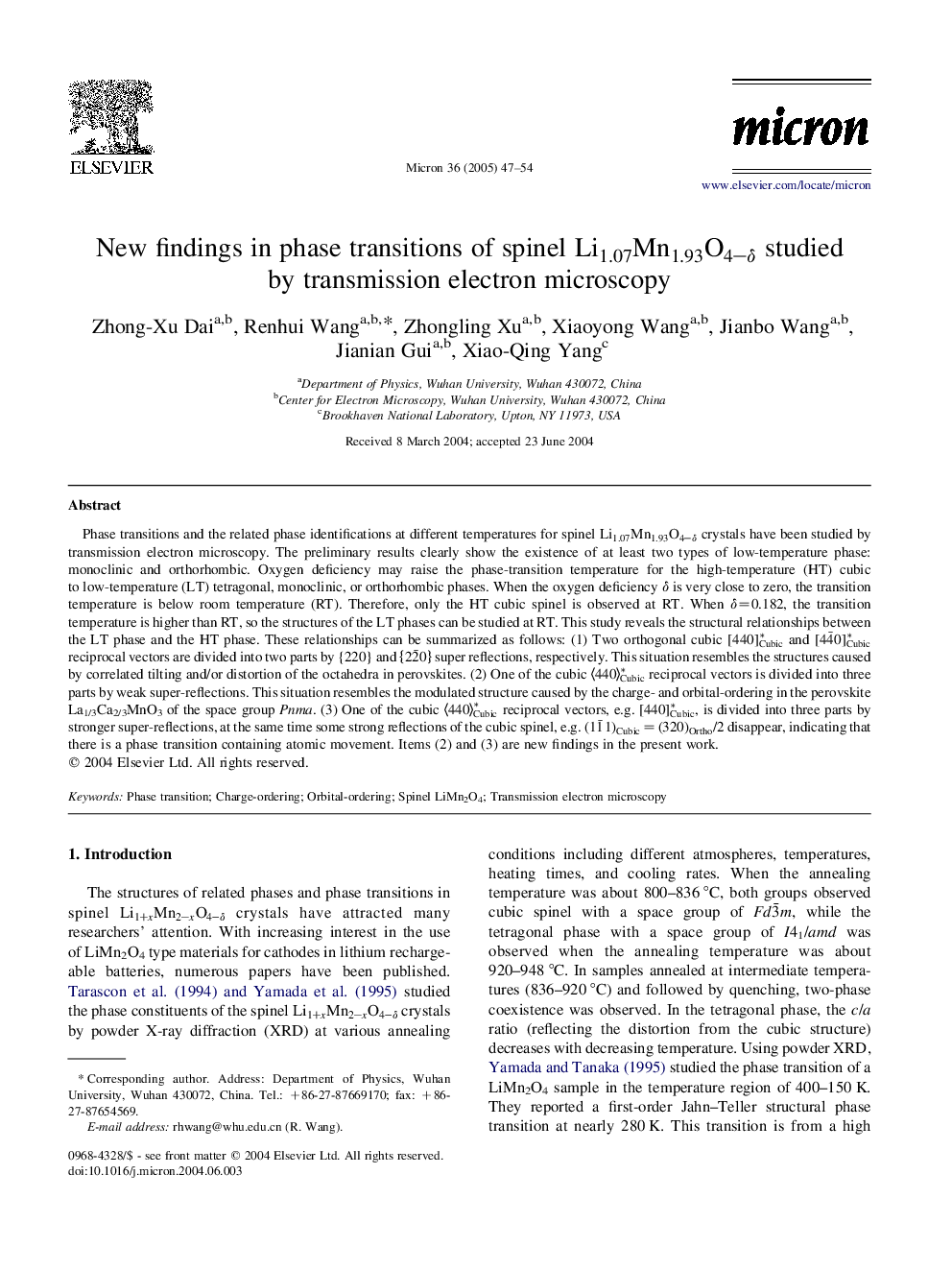| Article ID | Journal | Published Year | Pages | File Type |
|---|---|---|---|---|
| 10652335 | Micron | 2005 | 8 Pages |
Abstract
Phase transitions and the related phase identifications at different temperatures for spinel Li1.07Mn1.93O4âδ crystals have been studied by transmission electron microscopy. The preliminary results clearly show the existence of at least two types of low-temperature phase: monoclinic and orthorhombic. Oxygen deficiency may raise the phase-transition temperature for the high-temperature (HT) cubic to low-temperature (LT) tetragonal, monoclinic, or orthorhombic phases. When the oxygen deficiency δ is very close to zero, the transition temperature is below room temperature (RT). Therefore, only the HT cubic spinel is observed at RT. When δ=0.182, the transition temperature is higher than RT, so the structures of the LT phases can be studied at RT. This study reveals the structural relationships between the LT phase and the HT phase. These relationships can be summarized as follows: (1) Two orthogonal cubic [440]Cubic* and [44¯0]Cubic* reciprocal vectors are divided into two parts by {220} and {22¯0} super reflections, respectively. This situation resembles the structures caused by correlated tilting and/or distortion of the octahedra in perovskites. (2) One of the cubic ã440ãCubic* reciprocal vectors is divided into three parts by weak super-reflections. This situation resembles the modulated structure caused by the charge- and orbital-ordering in the perovskite La1/3Ca2/3MnO3 of the space group Pnma. (3) One of the cubic ã440ãCubic* reciprocal vectors, e.g. [440]Cubic*, is divided into three parts by stronger super-reflections, at the same time some strong reflections of the cubic spinel, e.g. (11¯1)Cubic=(320)Ortho/2 disappear, indicating that there is a phase transition containing atomic movement. Items (2) and (3) are new findings in the present work.
Related Topics
Physical Sciences and Engineering
Materials Science
Materials Science (General)
Authors
Zhong-Xu Dai, Renhui Wang, Zhongling Xu, Xiaoyong Wang, Jianbo Wang, Jianian Gui, Xiao-Qing Yang,
